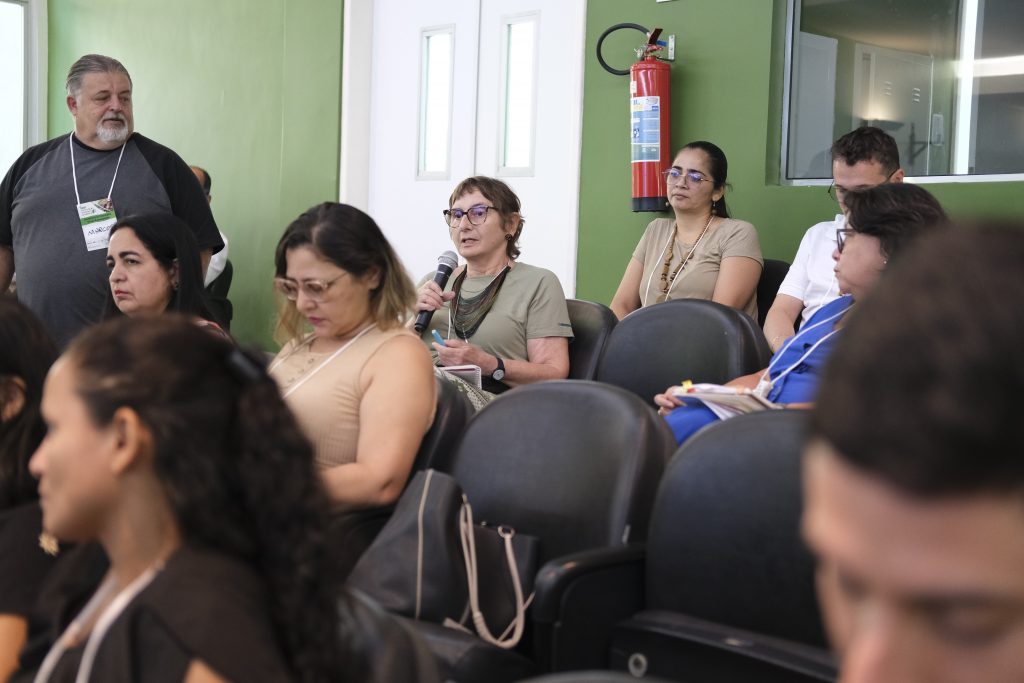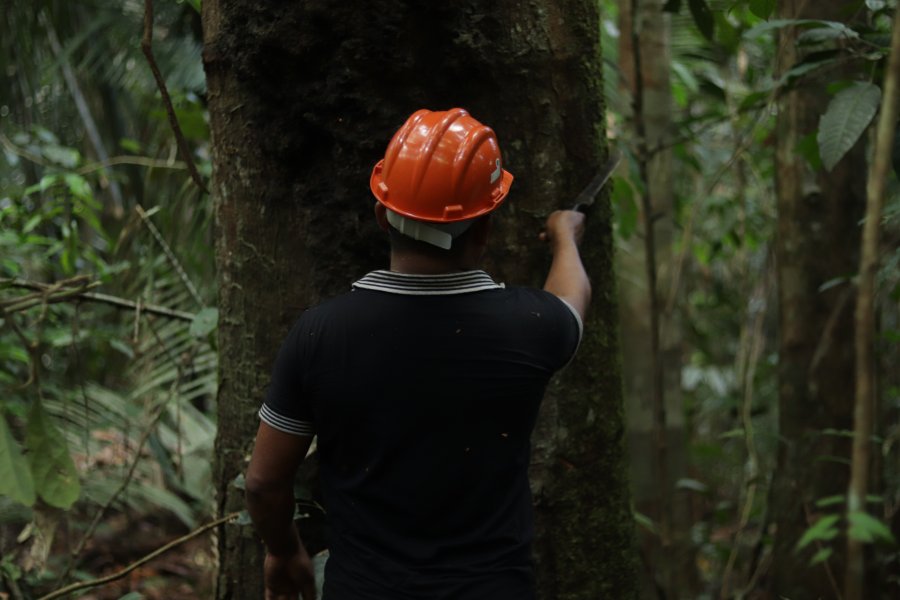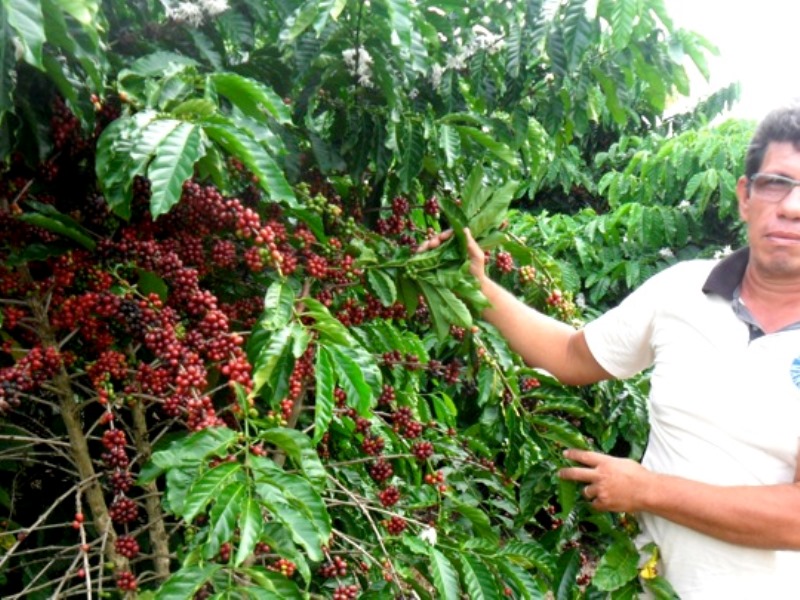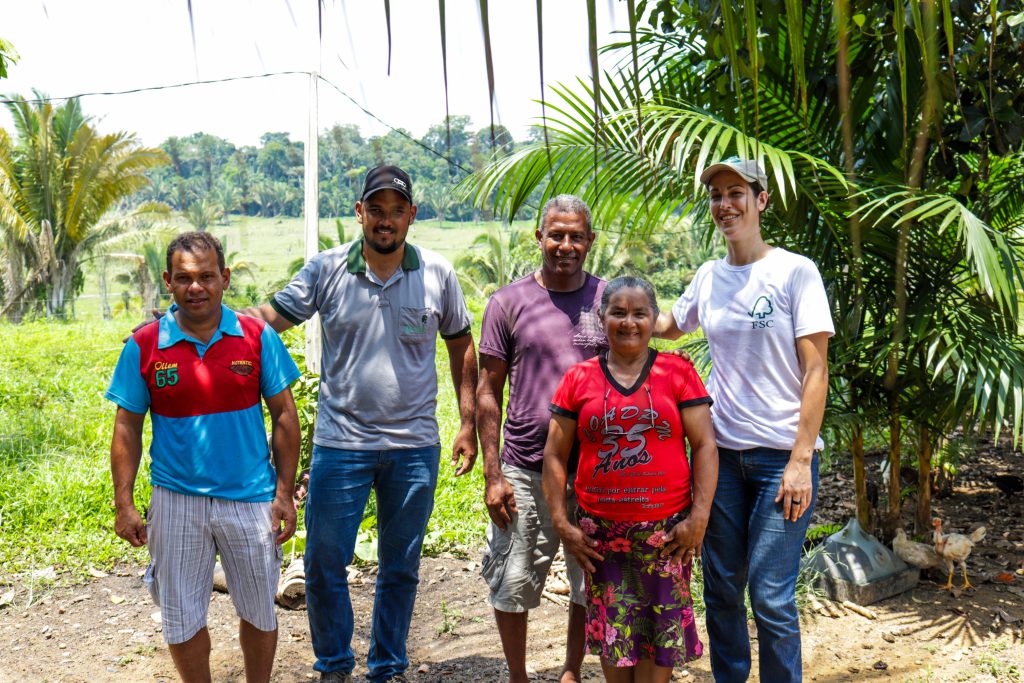Aliança Apuí analisa desmatamento e incêndios para auxiliar ações de combate e controle no município
Idesam, Apuí’s Secretariat of the Environment (SEMA), WeForest, WWF and FARM are part of the movement
By Henrique Saunier
Translated by Felipe Sá
Photo: Matheus Pedroso/Idesam
A little over two months after Idesam released a Technical Note with short and medium-term recommendations for the critical situation of the fires in Apuí, the Institute moves forward with one more action of the Apuí Alliance which made an analysis that associates the sources of heat of the fires and the region’s deforestation. According to data from INPE in the analysis signed by Idesam’s senior associate researcher, biologist Gabriel Carrero, from August 2018 to August 2019 28 thousand hectares were deforested in Apuí, equivalent to nearly 26 thousand soccer fields.
With this anaylisis that encompasses the first of all four thematic axes of the Apuí Alliance – “creation of strategic intelligence” – more actions can be taken with technical basis and with better knowledge of the most affected areas in the municipality. The other axes of the Alliance include: a “situation room”, which consists of a plan to promote fire prevention and its replacement as a method for pasture clearing; “fire-extinguishing”, which aims to qualify and equip the local brigade; and “recovering from the damage”, that carries out the planting of agroforestry and silvopastoral systems.
Currently, the Apuí Alliance is coordinated by Idesam and Apuí’s Secretariat of the Environment and is supported by WeForest, WWF and FARM. All organizations are united with the same purpose of controlling burnings and fires in the region and making data about deforestation and heat sources more transparent.
In this first analysis it was possible to spot the main areas and the profile of actors engaged in deforestation. The most critical regions are concentrated in the eastern and north-eastern portions of the Juma River Settlement Project, close to Dom Pedro, Nova Vida, Cacoal, Vale do Camaiú and Vila do Sucunduri.
To the biologist Gabriel Carrero who has been closely following the municipality’s situation for years, the analysis confirms a process that has been intensified since Apuí was founded. According to the researcher, forest areas are being occupied for the expansion of agricultural farms, especially by newcomers wanting to invest in the Amazon’s land and livestock market.
“The escalation of the expansion of farming areas not only reflects the arrival of people with money to invest, but also changes in the political and economic scenario since the approval of the new forest code in 2012, along with infrastructure improvements, agribusiness strengthening and reduction of control and inspection actions”, Carrero ponders.
Pedro Soares, Climate Change manager at Idesam, highlights that this preliminary study is just one of the actions already taken after the cases of forest fire in Apuí became bad news in both national and international media. Besides this first analysis of the situation, a second technical analysis with further details is in the final stages of preparation and will support decision-making. This analysis will quantify the extent of the areas affected by burnings and fires and how much of it took place in pasture, deforested and native forest areas.
“We are developing a transparency and accountability platform for the Apuí Alliance. A training of the Apuí Fire Brigade with the Fire Department was held in late October. Other than that, we followed the Brigade’s field activities together with Ibama’s PrevFogo (National Center for Forest Fire Prevention and Fighting)”, pointed out Soares, who said that the purchase of equipment needed to improve fire fighting is one of the next steps to be taken.
Actions
The southern region of the Amazonas state is an agricultural frontier in the Amazon, being pressured by what takes place in the states of Mato Grosso and Rondônia. Among the five municipalities listed as the most critically deforested ones, Apuí, Lábrea and Novo Aripuanã took a leap and they remain among the most deforested municipalities in the Amazon.
The actions suggested by the researcher in order to reduce burnings and fires should be focused on setting up firebreaks both around agricultural areas and newly cleared forest. He stresses that techniques that do not involve the use of fire for creating and maintaining farming areas need to be encouraged.
Among other actions, the Institute also proposes a positive agenda for the municipality that promotes forest restoration and encourages sustainable production. One of the strategies adopted by Idesam in its projects in the region and that should be more widespread is the use of agroforestry systems (SAFs, in Portuguese) and silvopastoral systems (SSPI, in Portuguese). This shows that it is possible to conciliate farming and forestry production with the conservation of native forests. The proposals also seek to consolidate the productive lives of locals by improving production, promoting low environmental impact techniques and combating invasions and land grabbing (grilagem).
*The complete analysis is available here (in Portuguese).






Leave a Reply